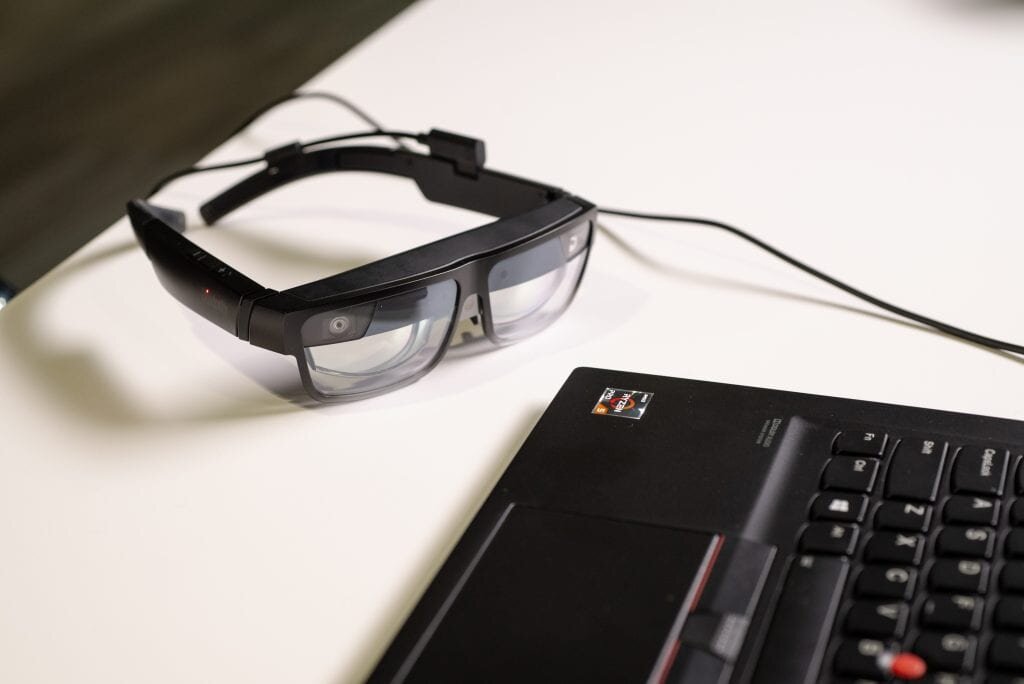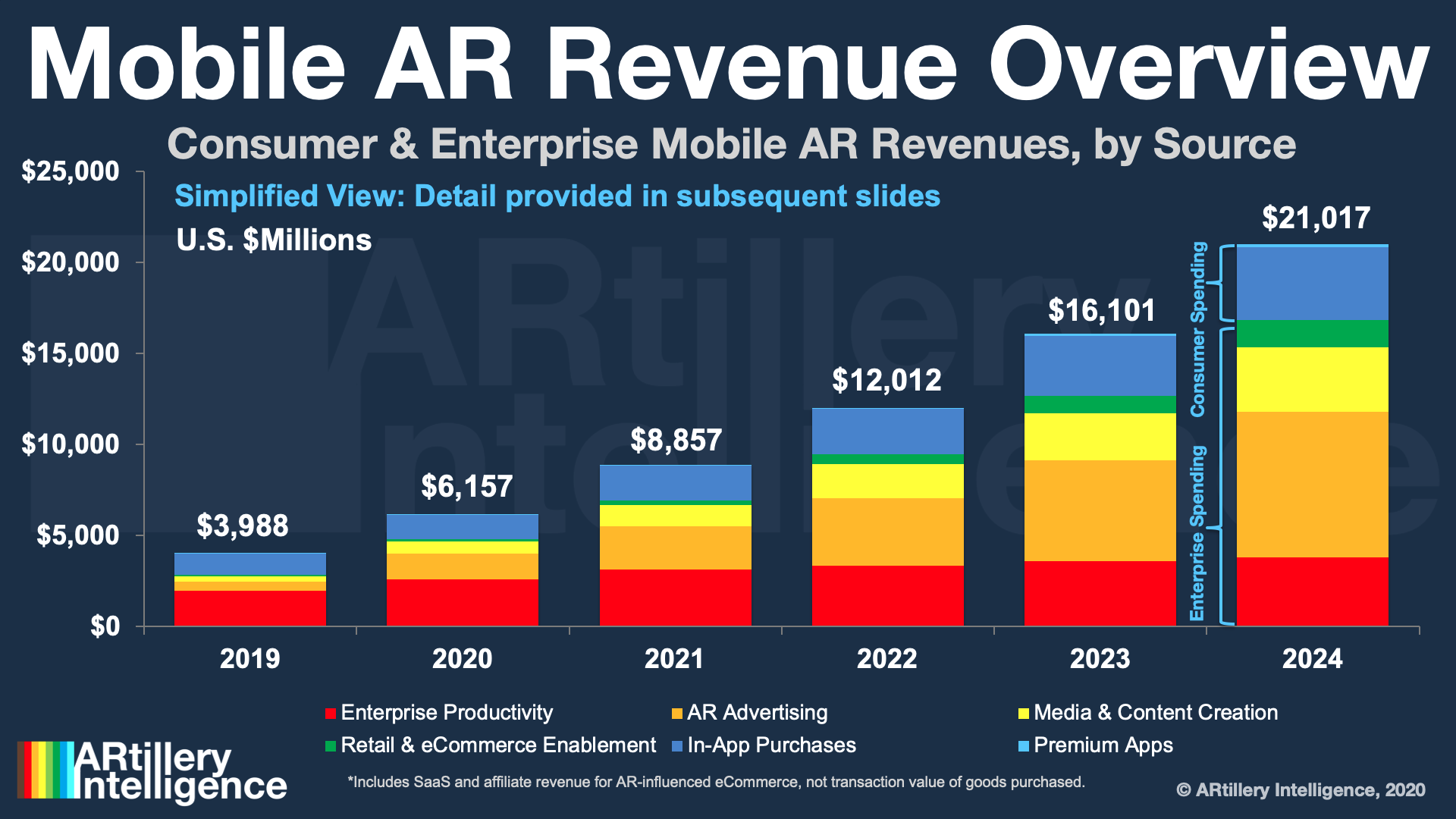New Smart Glasses Enhance Productivity for the Office Professional and Industrial Worker in Small Business or Global Enterprise, and Everywhere In-between
January 10, 2021 – Today, during the Consumer Electronics Show (CES®), Lenovo™ introduced the ThinkReality™ A3 lightweight smart glasses. One of the most advanced and versatile enterprise smart glasses to come to market, the ThinkReality A3 is part of a comprehensive digital solutions offering to deliver intelligent transformation in business and bring smarter technology to more people.
As increasingly distributed workforces and hybrid work models become the reality of a new normal, small and large businesses around the world are looking to adopt new technologies for smart collaboration, increased efficiency, and lower downtimes. From customized virtual monitors and 3D visualization to Augmented Reality (AR) assisted workflows and immersive training, the ThinkReality A3 helps transforms work across many levels of the enterprise.
The ThinkReality A3 tethers to a PC or select Motorola smartphones1 via a USB-C cable depending on the needs of smart workers anywhere. Versatile, portable, and comfortable, the ThinkReality A3 fits like sunglasses and can be enhanced with industrial frame options for safer and more durable use. Immersive but not isolating, the AR smart glasses are powered by the Qualcomm® Snapdragon™ XR1 Platform for high-quality performance and feature stereoscopic 1080p displays presenting the user with up to 5 virtual displays. An 8MP RGB camera provides 1080p video for remote expert use cases while the dual fish-eye cameras provide room-scale tracking.
“The A3 is a next generation augmented reality solution – light, powerful and versatile. The smart glasses are part of a comprehensive integrated digital solution from Lenovo that includes the advanced AR device, ThinkReality software, and Motorola mobile phones. Whether working in virtual spaces or supporting remote assistance, the ThinkReality A3 enhances workers’ abilities to do more wherever they are,” said Jon Pershke, Lenovo Vice President of Strategy and Emerging Business, Intelligent Device Group.
PC Edition for Virtual Monitors
The ThinkReality A3 PC Edition tethers to a laptop or mobile workstation to enable users to position multiple, large virtual monitors in their field of view and use Windows software tools and applications. Virtual monitors expand the value of PCs, creating more productivity, privacy, and immersive experiences for industries like finance, architecture and engineering, as well as for any remote and mobile worker where space and privacy are limited.
Virtual monitors are optimized and compatible with Lenovo’s leading ThinkPad laptops and mobile workstations powered by Intel and AMD Ryzen™ processors.
Industrial Edition for Enhanced Decision Making in Complex Environments
The ThinkReality A3 Industrial Edition tethers to select Motorola smartphones1 for hands-free, AR-supported tasks in complex work environments. The Industrial Edition is supported by the ThinkReality software platform, which enables commercial customers to build, deploy, and manage mixed reality applications and content on a global scale, with global support.
For use in scenarios from factory floors and laboratories to busy retail and hospitality spaces, certified turnkey applications on the ThinkReality platform powers remote assistance, guided workflows, and 3D visualization. Now, industrial workers have a light, flexible and scalable set of smart glasses to increase productivity and safety while decreasing error rates in daily tasks.
ThinkReality Ecosystem of AR/VR Solutions
Lenovo’s ThinkReality platform is helping accelerate adoption of the next generation of wearable computing — offering smarter technology to enable smarter workers. With the growing ThinkReality cloud-agnostic ecosystem of hardware and software solutions, enterprises have more choices in building and deploying mixed reality technologies to improve business.
Lenovo AR devices include the ThinkReality A3 smart glasses and A6 headset. The ThinkReality A6 features a full-featured sensor array, expandable memory, 1080p resolution waveguide optics, and a removable battery for extended use of the head mounted display.
VR use cases in the enterprise are rapidly expanding from training and simulations to immersive experiences for sales and marketing, as well as other applications. The Lenovo Mirage™ VR S3 all-in-one headset is specifically designed for enterprise and is ready to scale for global operations and is ideal for soft-skill training solutions. For advanced, high-performance mixed reality and virtual reality applications, Lenovo offers a portfolio of workstations certified to work with various Varjo XR/VR headsets and is a reseller of Varjo’s human-eye resolution solutions.
Availability
The Lenovo ThinkReality A3 smart glasses will be available in select markets worldwide starting mid-2021. Visit the ThinkReality A3 web page to find out more, or contact your local Lenovo sales representative.
Visit the Lenovo StoryHub CES press kit for images and full specs and Lenovo’s CES homepage for more details.
About Lenovo
Lenovo (HKSE: 992) (ADR: LNVGY) is a $50 billion Fortune Global 500 company, with 63,000 employees and operating in 180 markets around the world. Focused on a bold vision to deliver smarter technology for all, we are developing world-changing technologies that create a more inclusive, trustworthy and sustainable digital society. By designing, engineering and building the world’s most complete portfolio of smart devices and infrastructure, we are also leading an Intelligent Transformation – to create better experiences and opportunities for millions of customers around the world. To find out more, visit https://www.lenovo.com, follow us on LinkedIn, Facebook, Twitter, YouTube, Instagram, Weibo and read about the latest news via our StoryHub.
1 Compatible with Motorola smartphones using a Qualcomm Snapdragon 800 series processor or better, and DisplayPort capability.
LENOVO, THINKREALITY and LENOVO MIRAGE are trademarks of Lenovo. MOTOROLA, the Stylized M Logo, MOTO and the MOTO family of marks are trademarks of Motorola Trademark Holdings, LLC. Qualcomm and Snapdragon are trademarks of Qualcomm Technologies Inc. Qualcomm Snapdragon is a product of Qualcomm Technologies, Inc. and/or its subsidiaries. AMD and Ryzen are trademarks of Advanced Micro Devices, Inc. Intel, the Intel logo, and other Intel marks are trademarks of Intel Corporation or its subsidiaries. USB Type-C® and USB-C® are registered trademarks of USB Implementers Forum. All other trademarks are the property of their respective owners. ©2020, Lenovo Group Limited.











